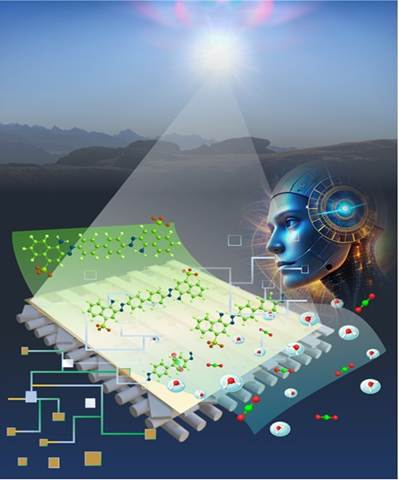A new, groundbreaking water filter may soon hit the market that not only captures pollutants but also eliminates them, utilizing the power of sunlight, gentle vibrations, and a bit of artificial intelligence (AI).
Industries ranging from textiles to pharmaceuticals often discharge wastewater containing harmful dyes like Methylene Blue and Congo Red into the environment. These pollutants don’t just stain water; they also pose significant risks to ecosystems and human health, causing skin issues, respiratory diseases, and more. Existing methods to treat such contamination — including electrochemical processes, ozone treatment, and other oxidation techniques — tend to be energy-intensive and rely on expensive chemicals, making them hazardous to the environment.
A team of researchers at the Institute of Nanoscience and Technology (INST) in Mohali, an autonomous body under the Department of Science and Technology (DST), has developed an innovative solution. They designed a 3D-printed scaffold made from biodegradable polylactic acid (PLA), which is known for its piezo-photocatalytic properties.
Dr. Aviru Basu and his team coated this scaffold with Bismuth Ferrite (BiFeO₃), a catalyst that breaks down pollutants when exposed to light and mechanical energy. This hybrid system — a combination of scaffold and catalyst — leverages piezo-photocatalysis, a process where both sunlight and tiny vibrations help activate the catalyst. Even on cloudy days, the vibrations ensure continuous pollutant degradation, addressing a limitation often found in solar-powered purification systems.
The breakthrough was recently published in the journal Nano Energy (Elsevier). The process uses sustainable solar energy, advanced catalysis, and predictive machine learning for environmental remediation.
In addition to this, the researchers employed machine learning models to predict system performance under various conditions. Using Artificial Neural Networks, they were able to achieve prediction accuracy of up to 99%, allowing them to optimize the system’s efficiency.
The results are impressive: the system removed 98.9% of Congo Red (CR) and 74.3% of Methylene Blue (MB) from wastewater, far surpassing the effectiveness of current high-end treatment methods.
What makes this system truly remarkable is its eco-friendly, biodegradable, and cost-effective nature. It is reusable, minimizes waste, reduces chemical use, and is scalable for a wide range of applications. Furthermore, it can be powered by renewable energy sources like sunlight and vibrations, making it a sustainable solution for both industrial use and remote communities.
To bring this idea to life, the team synthesized the BFO nanoparticle catalyst using a sol-gel method, developed 3D printing techniques for PLA scaffolds, and carried out extensive testing for dye degradation. They also used machine learning to further refine and predict the system’s performance.
















